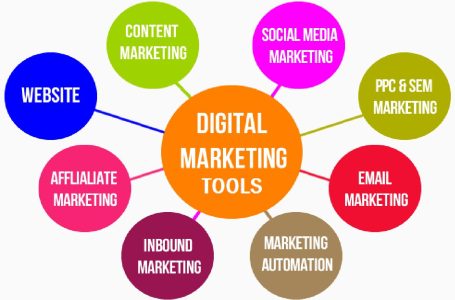In the marketing world, there are many terms and processes that the vast majority of people are unaware of. Over time, this field of work has transformed into what it is today: a way of combining aspects of psychology with selling products and services. Of course, this would not be possible if a well-defined and established schedule of activities is not managed.
The fact is that there is something particular that can help boost the sale of any product or service, even if the company’s resources are not that extensive. Today, we will talk about “desire” from a marketing perspective.
Throughout this article, you will learn critical points such as identifying a potential client’s needs, creating the buyer persona, and making an excellent persuasive copy.
What does consumer demand refer to in marketing?

We can define this as any need a human or person has to meet their basic, general, and specific needs. This means that every product and service that is linked to a person’s condition can be converted into consumer demand.
Of course, in theory, it sounds easy to say, but this will depend entirely on how persuasive the advertising used by a company or brand is to generate that need. The best strategies create a need for something the person does not need and thinks they do require in their life.
As for consumer demand, this is generated in different ways since not all countries or their cultures are the same. Therefore, the desires that a person in China may have are entirely different from those that a Latino will have. In that case, two marketing and advertising strategies regarding consumption were used for two completely different communities.
Now, it is essential to consider some characteristics that perfectly define consumer demand in this regard. Among these, we can mention the following:
- The marketing department of a company usually studies current demand to give it an adequate price and to be able to perceive some profit margin.
- People in a society usually buy the most popular or most consumed in a region.
- Making price adjustments based on promotions, sales, and advertising strategies is possible.
- The demand for a product or service is linked to cultural and social factors.
- A company can set a price depending on the demand for a product or service.
As for advertising, this is much more practical today thanks to tools like Google Ads and others. It is no longer necessary to depend on a company in traditional media, as it is enough to have the Internet, know how to define an advertising campaign and have the corresponding budget.
How do you identify the needs of your potential clients?
You can consider many vital points when describing the needs of a potential client who contacts you or your company. From knowing their short- and long-term objectives to the budget, they must pay for your services. However, this is very general and not always ideal.
The first thing to mention is that everything will depend on the type of company, product, or service you are offering and want to sell. Consider the following vital aspects: you have a photography and video company.
1. Identify what type of service or product the person is looking for.
Achieving this is, in theory, straightforward. There are many ways to get this information, from critical questions in customer service via chat to having users fill out a form. However, you can make it a little more fresh and natural by filtering or profiling; that is, if the person comes to you looking for only professional photographs, you can do the following:
- Please send him a message or voice note which is not too long or extensive. Be direct and concise.
- For example, the information can be like: “It’s a pleasure to serve you. I am (your name), taking studio-style portrait photographs. Would you like a job of this type or something more natural?”
With this simple message, some of the following possible scenarios may occur:
- Let the person tell you they want one of your two options.
- Let them tell you they want something more with an already-defined idea.
This will allow you to rule out possibilities since a photography service covers many styles and photos. After they answer this, you can begin to explain what your process is and the benefits that the person will obtain by hiring your services, that is, if you suit them as a photographer, since you not only offer digital content but also deliver printed photos, with customization and in record time.
2. Investigate the networks of the person who hires you.
This advice mainly applies to a growing company that does not generate enough money to automate processes. The idea is simple: research their social media profiles after a person contacts you. That is, knowing who you are, where you come from, your social status, tastes, and interests. Although it is not always possible since not everyone has a public life on social networks and the Internet, you can get vital information from their publications and what they share.
For example, a sushi restaurant contacts you to take photos of their products for sale. If you check their profile on Instagram, you will most likely notice the quality of their content and the type of work they have up to that point. Based on this, you can offer various advertising packages that could improve. People like to be given solutions, and you should do that!
Creation of your buyer persona

Every buyer persona creation has to be linked to what we have mentioned and to the theory behind the Maslow pyramid. So, the steps you must follow are the following:
Research
It is the primary step to execute since collecting data from a community or group of people you want to focus on depends on it. In this first phase, you collectively know people’s needs and desires. You use the research through interviews and analysis of metrics on social networks, among other methods.
Segmentation
Once you have collected all the information, it is time to segment your audience, that is, decide who you will target. For example, selling energy drinks has to be focused on a fitness and relatively young audience. The people must be between 20 and 35 years of age.
Identification
Here, you have to identify the purchasing patterns and behavior of the audience you have segmented, intending to know what sales strategy to implement.
Creation
Based on accurate data, a buyer persona does not stand out for being something actual but somewhat fictitious. In this phase, you must create your buyer persona with all the data and characteristics collected.
Validation
After having a base, it is time to give it real support. That is, you have already created your target audience in an ideal way; now, it is a matter of taking it to something more real according to the data you have. The idea is that this is a faithful representation of your base buyer persona.
Personalization
It is simply about personalizing your services and making them unique for each client or group with similar characteristics. For example, you have one way to address a fitness group, but you have another way and another tone for those looking for a web design service.
Update
Just as the applications and information are updated, just as you should do with your buyer persona. You can use this action periodically, weekly, monthly, or every so often. Everything will depend, in principle, on the behavior of the market to which you are dedicated and the audience’s needs.
How do you make your potential customers want to buy your products?
- Know very well what the needs of your target audience are.
- Offers more than one solution.
- Offer a value proposition to the client and make them feel like they are earning more than what they are paying.
- Focus on offering a good shopping experience.
- Promotes closeness between buyer and seller and answers any questions the person may have.
- Don’t lose contact with your clients.
- Persuasive copywriting
This is a method used to connect with anyone on a word level. The idea is to choose the right words in a specific order to motivate a purchase or create a need that is not yet defined. The information that represents good copy is that it is direct, concise, and as straightforward as possible.
How do you guide your potential customers from their needs to the purchase?
- The main thing is to be clear about the person’s needs and understand how your product can serve them.
- Show what the intrinsic value of what you offer is.
- Focus on providing a pleasant shopping experience. A good salesperson knows how to guide the person and prevent him from having doubts or little understanding of what he will buy.
- Offer incentives, offers, and promotions even if you don’t have them available. A simple gift for purchasing a product can build loyalty among anyone.
Sales funnels and strategic marketing systems
This is an exciting topic since a sales funnel helps us better understand people’s steps and processes, from discovering a need to making the sale. From here, strategic systems focused on marketing begin to be developed, all intending to have a precise number of natural and effective buyers.





